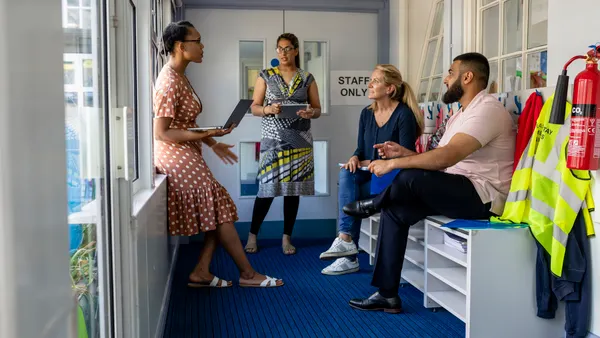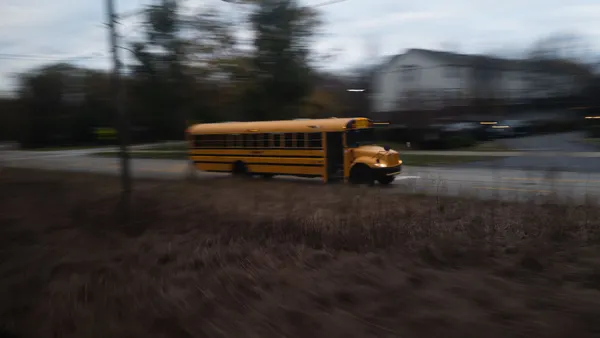Dive Brief:
-
Common and wide-scale solutions to staffing challenges like recruitment strategies, better compensation, professional development and more accessible pathways may help repair the teacher pipeline. But other common issues like burnout and demoralization also need to be addressed, according to a report released Tuesday by the Center on Reinventing Public Education.
-
Unconventional educator roles, such as being a mentor to a teaching team, are appealing to teachers, because they can have increased autonomy and personal connections. Drawbacks include autonomy leading to isolation, collaboration challenges, and increased teacher responsibility with less guidance from leadership.
-
Most of the 32 teachers across nine school systems that CRPE researchers interviewed liked working in unconventional roles but didn't see themselves in the positions after 5-7 years. To recruit and maintain more innovative educators, the report recommends that district leaders increase teacher autonomy, customize the support provided, and determine whether reimagined teaching roles can improve student learning.
Dive Insight:
CRPE's research detailed six types of unconventional teacher roles:
- Lead teacher. This educator acts as a mentor, curriculum developer and co-teacher for a small team of teachers from the same content area or grade level.
- Empowered teacher. The role this person plays includes setting school-level structures and policies, like student learning targets and dress codes, and contributes to the school's annual priority plans.
- Team teacher. This educator is part of an integrated team consisting of two to four other teachers per 50-80 students.
- Community learning guide. This person is charged with creating community-connected learning experiences, usually related to students' cultural backgrounds, natural environments or partnerships with local businesses.
- Solo learning guide. This educator independently teaches five to 15 students, leveraging third-party curriculum materials and resources.
- Technical guide. This role relies on educators' expertise in technical areas like architecture and robotics to design curriculum and to work with cohorts of 10-20 students, often co-teaching with another guide.
Roles like these could make the profession more fulfilling and sustainable, per the report.
Staffing challenges exacerbated in the wake of the COVID-19 pandemic have led experts to advocate for a host of different solutions, which often include salary increases and other perks to draw or retain educators.
District leaders often invested federal pandemic relief dollars in providing teacher bonuses or stipends, for example.
However, those solutions, which are often considered practical and commonsense, don't always address other issues of the teaching profession, such as mental burnout.
K-12 employees are almost twice as likely as other government employees to say they have had a difficult time adjusting to the changes brought on by COVID-19, according to a 2021 survey conducted by MissionSquare Research Institute. School employees reported higher levels of anxiety, stress and burnout during the pandemic.
A separate survey released in 2022 by Teachers Pay Teachers showed teachers cited politicians and parents as the top sources of what they say is "a lot of stress."
“My first year of teaching was super, super hard. … I just did not see how it was sustainable. … I was so drained," one of the teachers interviewed for the recent CRPE report said. She said switching into a team teaching position from her previous role as an elementary school teacher prevented her from leaving the profession entirely. "Now I love my job, I love to go to school, and I love the support I get from my team.”













